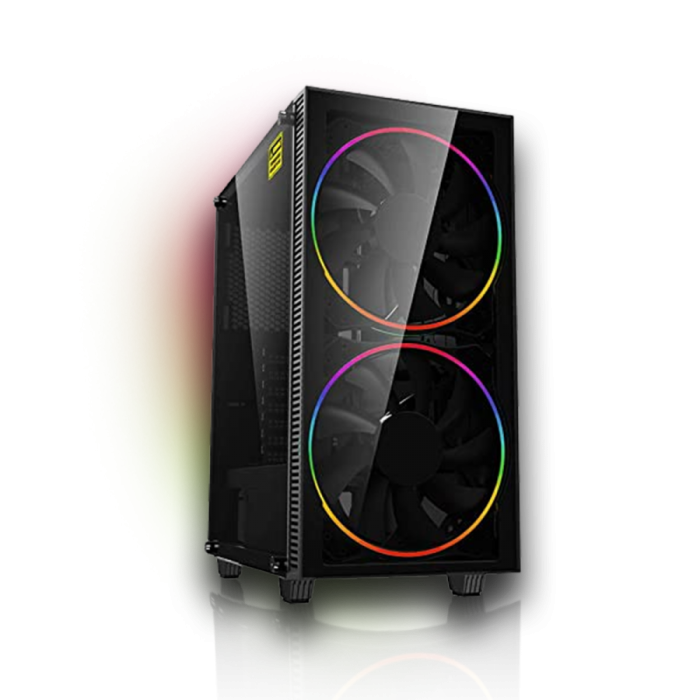Changing a graphics card on a laptop can seem like a daunting task, especially for first-time DIYers. Many users upgrade their graphics cards to improve gaming experiences, enhance video editing performance, or increase graphical output for professional software. Unlike desktops, laptops have more limitations because components are often integrated into the motherboard. However, some laptops offer the option to change the graphics card, so it’s worth exploring if you want to boost your machine’s performance. This guide provides a detailed, step-by-step approach how to change graphics card on laptop, ensuring you can do it safely and effectively.
Understanding Your Laptop’s Compatibility
Check If Your Laptop Supports a Graphics Card Upgrade
Before beginning the process of changing your graphics card, the first step is to determine if your laptop allows for an upgrade. Not all laptops come with removable graphics cards; many integrated graphics chips are soldered directly onto the motherboard.
You can find this information in your laptop’s user manual or by checking the manufacturer’s website. Look for terms like “MXM (Mobile PCI Express Module)” or “upgradeable graphics” in the specifications. The MXM standard is a common removable graphics card format used in many gaming and professional laptops. If your laptop does not support an upgrade, you might need to consider alternative options, such as purchasing a new laptop or using an external graphics card via Thunderbolt, if supported.
Identify Your Current Graphics Card Model
Once you’ve confirmed that your laptop can be upgraded, the next step is to identify the current graphics card. This information will help you choose a compatible replacement. You can quickly do this by accessing the Device Manager on Windows.
- Right-click on the Start button and select “Device Manager.”
- Expand the “Display adapters” section.
- Note the name of your graphics card.
If you need more details about performance or specifications, consider third-party software such as GPU-Z, which provides comprehensive information about your graphics card and its capabilities.

Preparing for the Upgrade
Gather Necessary Tools
Before changing the graphics card, gather the necessary tools. You will generally need:
- A small Phillips screwdriver
- A static wrist strap (to prevent electrostatic discharge)
- A clean, flat workspace
- A soft cloth or mat to place your laptop on
Having everything ready and organized can streamline the process and reduce the likelihood of losing small screws.
Backup Important Data
Before making any hardware changes, it’s wise to back up your important data. Changing components can sometimes lead to unforeseen issues, so having a backup ensures you won’t lose any critical files. Use an external hard drive, cloud storage, or even a USB flash drive to copy your essential documents, photos, and other data. This precautionary step provides peace of mind as you proceed with the upgrade.
Disassembling Your Laptop
Disconnect All External Devices
Before disassembling your laptop, make sure to turn it off completely and disconnect all external devices. This includes the power adapter, USB devices, and any other peripherals connected to your laptop. Unplugging these devices protects both you and your laptop and prevents accidental short circuits.
Remove the Battery (If Applicable)
If your laptop has a removable battery, take it out before proceeding. This action will minimize the risk of electrical damage during the upgrade. Simply locate the battery release latch, slide it to the unlock position, and remove the battery from its compartment. If your laptop has an integrated battery, check the manufacturer’s guide for specific instructions.
Unscrew the Laptop Case
Locate the screws on the bottom panel of your laptop. Use the Phillips screwdriver to carefully remove these screws, placing them in a small container for safekeeping. Some laptops may have access panels specifically for upgrading components; referring to the user manual will help you identify the correct screws to remove. After removing the screws, gently pry open the bottom cover using a plastic spudger or similar tool. Be gentle to avoid damaging the casing.

Removing the Old Graphics Card
Locate the Graphics Card
Once you’ve accessed the interior of your laptop, look for the graphics card. In many laptops, the graphics card will be located near the CPU on the motherboard. If your laptop uses an MXM card, it will be rectangular and visually distinct from other components.
Disconnect the Graphics Card
Carefully disconnect any cables that may be attached to the graphics card. This can include power connectors or display cables. Gently pull these connectors away from the graphics card, ensuring you don’t use excessive force, as this could damage the pins or connectors.
Unscrew the Graphics Card
After disconnecting all cables, secure the screws holding the graphics card in place. Depending on your model, there may be one or two screws that hold the card firmly. Carefully remove the screws and gently slide the card out of its slot. Be cautious not to apply too much force; if it doesn’t budge, double-check for any hidden screws or latches that may be securing it.
Installing the New Graphics Card
Insert the New Graphics Card
With the old graphics card removed, it’s time to install the new one. Begin by aligning the new graphics card with the slot. Slide it gently into the connection, ensuring it fits snugly. Once positioned, apply light pressure until you feel it lock into place.
Secure the Graphics Card
After successfully inserting the new card, secure it by replacing the screws you previously removed. Tighten these screws carefully, ensuring the card is fixed firmly in place but not overtightened, which could cause damage.
Reconnect Cables
Next, reconnect any cables you previously disconnected. Double-check the connections to ensure everything is secure before moving on to the next step. Confirm that all relevant power and data connections are restored; this is crucial for the proper functioning of your new graphics card.
Reassembling Your Laptop
Replace the Laptop Cover
With the new graphics card safely installed, it’s time to reassemble your laptop. Carefully position the bottom cover back onto the laptop’s base. Ensure that everything aligns correctly and that no cables are pinched between the cover and base.
Screw Down the Cover
Using the Phillips screwdriver, replace all screws that you previously removed from the bottom panel of your laptop. Make sure they are tightened appropriately but avoid overtightening, as this could lead to bending or damaging the casing.
Reinsert the Battery (If Applicable)
Finally, if your laptop has a removable battery, reinsert it into its compartment and ensure that it snaps into place securely. This step may not apply if your laptop has an integrated battery; in that case, proceed to the final steps.

Testing Your New Graphics Card
Boot Up Your Laptop
Once you’ve reassembled your laptop, reconnect it to power and turn it on. Watch your screen closely for any error messages or issues. If everything goes well, you should see the operating system boot up normally.
Install or Update Drivers
Even if your new graphics card is functioning, it’s important to install or update the necessary drivers to ensure optimal performance. Visit the manufacturer’s website to download the latest drivers for your specific card. Install them by following the provided instructions, and restart your laptop once the installation is complete.
Run a Benchmark Test
To confirm that your upgrade has been successful, run a benchmark test using software like 3DMark or UserBenchmark. These programs assess your graphics card’s performance and offer comparisons against existing hardware. You’ll want to compare your results with benchmarks from your previous graphics card to see how much of an upgrade you have achieved.
Check Settings in Your Favorite Games or Applications
Finally, test your new graphics card with your favorite games or applications. Access the settings and, if available, increase the graphical fidelity. Observe whether the performance improves and enjoy the enhanced visuals and frame rates.
Conclusion
Changing your laptop’s graphics card can significantly enhance its performance, making it ready for gaming, video editing, and demanding applications. This step-by-step guide provides you with the necessary knowledge to approach the upgrade confidently and securely.
Always remember to back up your data, handle your devices carefully, and stay organized throughout the process. With patience and attention to detail, you can successfully change your graphics card and enjoy a more powerful computing experience. Dive into this upgrade with excitement and look forward to tackling new tasks with improved efficiency and stunning graphics!


